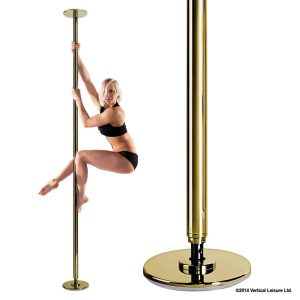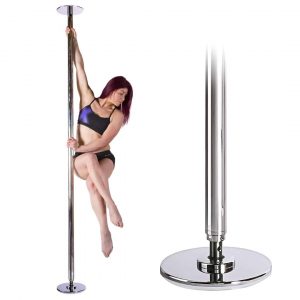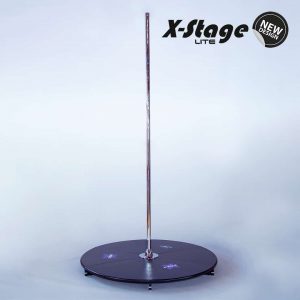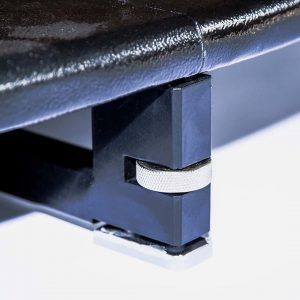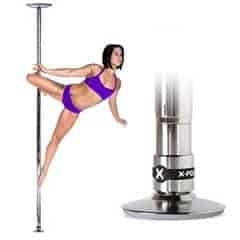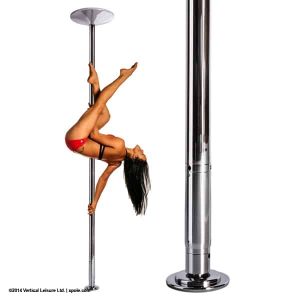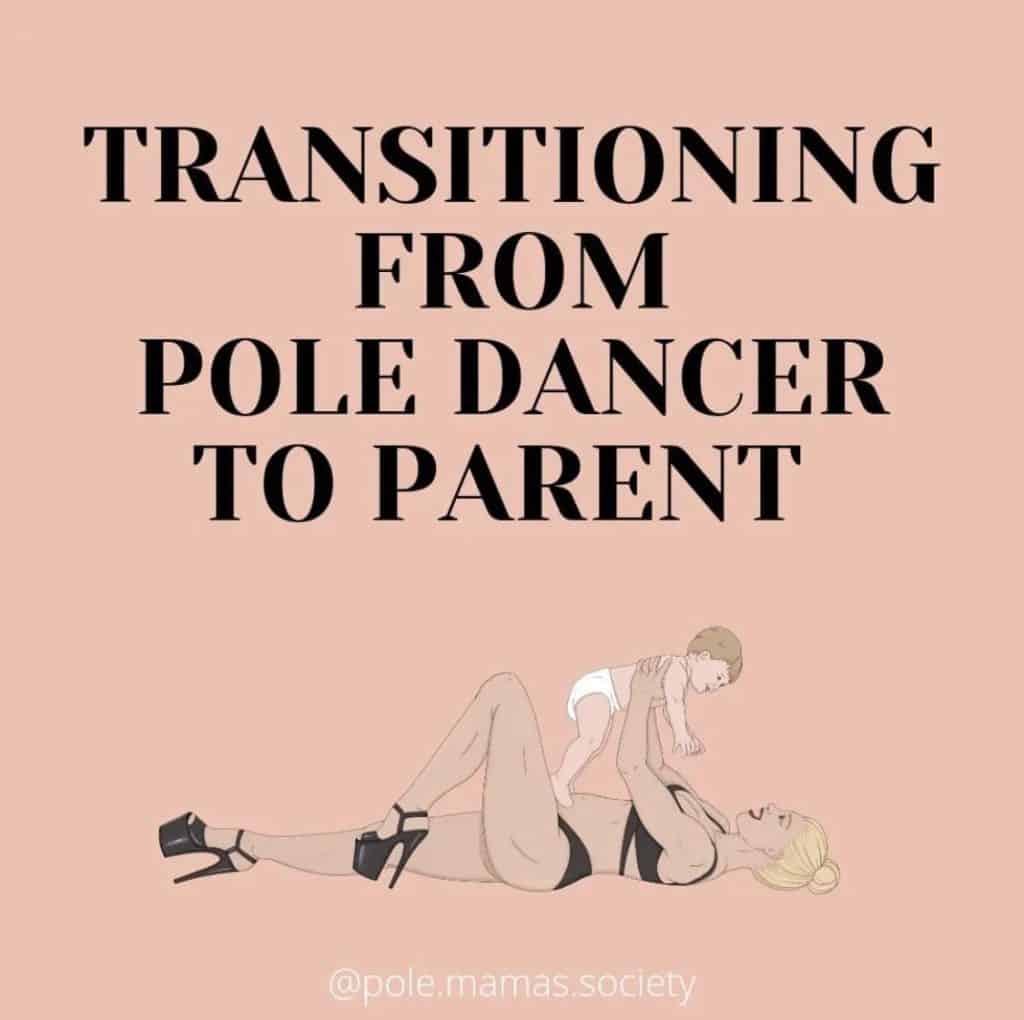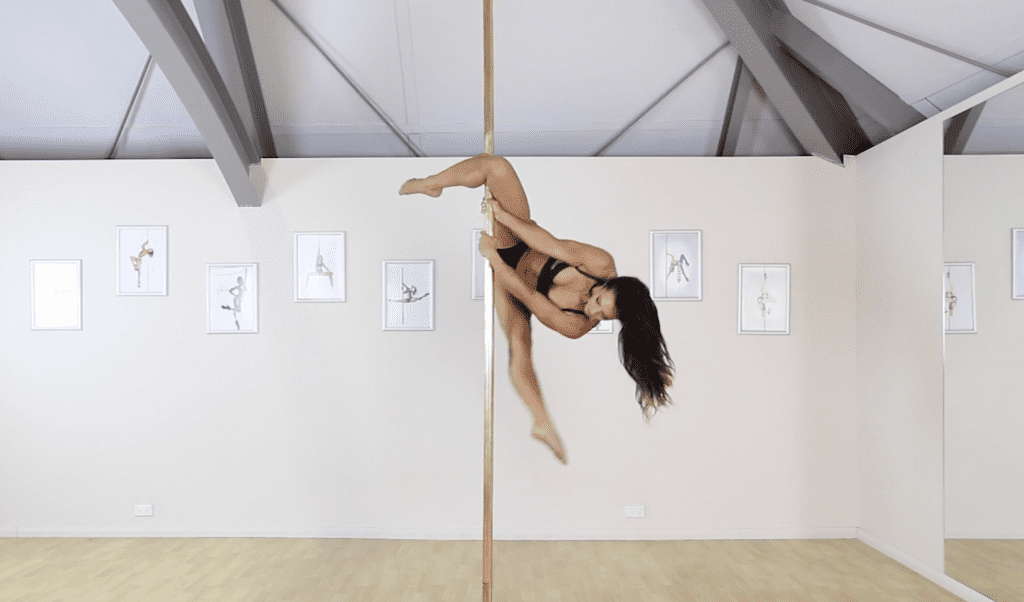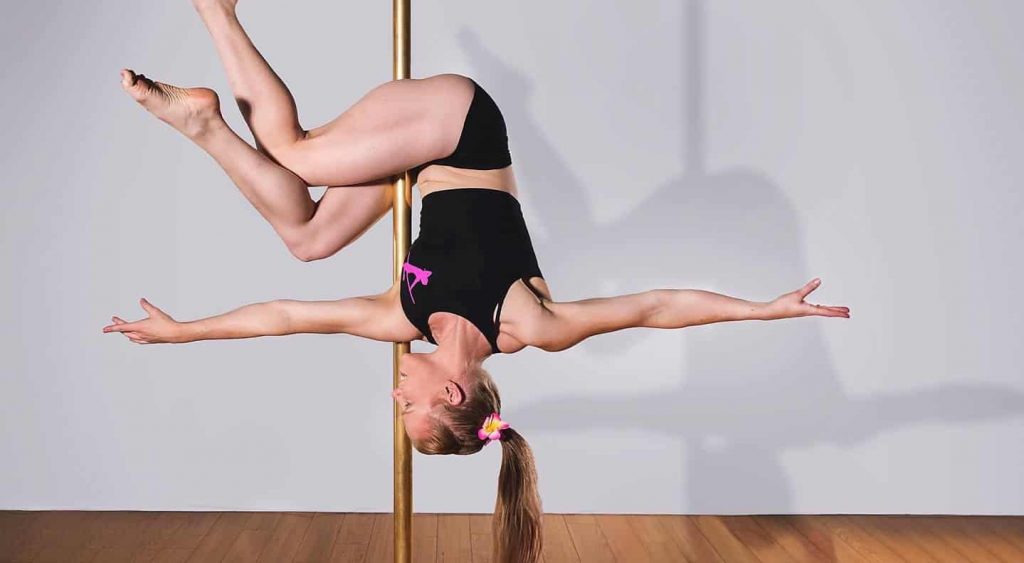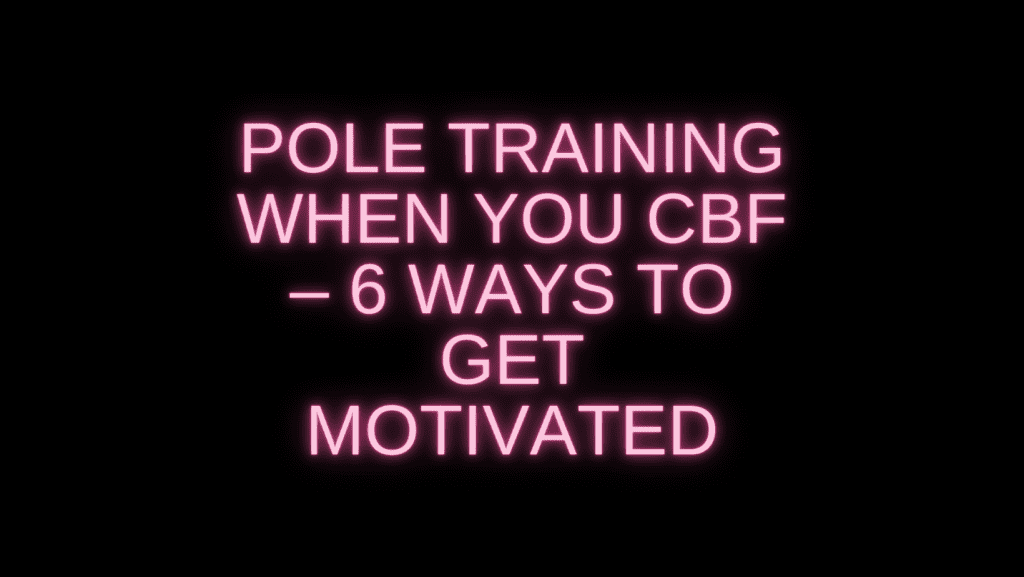Choosing a pole to put up in your house can be a daunting task, and it’s one that every home poler wants to get right. There’s a lot to consider, including the height and nature of your ceiling, the finish of the pole, whether you want a stage pole or a mounted pole, and more, and it can be confusing. So, here’s a guide to take out some of the guesswork and help you choose the perfect pole for your space!
One of the most important things you need to know when shopping for poles is to NEVER buy a cheap or fake branded pole. ALWAYS buy directly from a reputable brand such as X-Pole. X-Pole is a company that has put a lot of work into professionally engineering poles from quality materials that are fully fit for purpose and safe for pole dancers at all levels. Many cheap or fake poles use unsuitable and poor quality materials (sometimes even plastic parts in place of metal) that aren’t safe for weight bearing, which makes them extremely dangerous for pole tricks. There have been instances where people have been seriously injured as a result of using fake and poor quality poles. Don’t let this be you!
Think of buying a pole like buying a car. Don’t buy a lemon!
With that said, read on to find out about all the different types of poles!
Pole Finishes
Brass
Pros: Brass is a popular finish for a lot of studios and competitions, and it tends to suit most skin types (eg, dry, oily, sweaty, combination, etc). It’s known for having a nice amount of grippiness, especially when the dancer has their preferred grip aids on.
Cons: Some people are allergic to brass. It requires warming up in colder temperatures to feel grippy and may give a feeling of dry slip if not warm enough. Is the more expensive finish.
Stainless steel
Pros: Great for people who live in humid climates and coastal areas and want to use their pole outside, as it will not rust when exposed to the elements. Also great for people with metal allergies.
Cons: Some people find it difficult to grip on this finish as steel has a bigger “slide” factor than brass. However, with the right grip aids and practice, many people love the way steel offers both slide and stick.
Chrome
Pros: A great budget friendly option. A nice combination of slide and stick, similar to stainless steel.
Cons: Due to the nickel in this metal, some people have an allergic reaction to chrome.
Powder coated
Pros: Grippy, and great for colder climates as the pole does not require as much warming up.
Cons: Can be too grippy, particularly if you or the weather is very warm, which can result in more pulling, pinching or burning/bruising of the skin than usual. And like any pole, powder coated can still become slippery if the dancer becomes very sweaty.
Silicone
Pros: Silicone-finished poles are most commonly used in circus-style/chinese pole as you do not need bare skin to grip, so full-coverage costumes are possible. This is a great option if you prefer to pole in clothes and it’s also great if you struggle with excessive sweating. This is the grippiest of all the poles!
Cons: Due to being so grippy you may be limited in some of the moves you can do, for example anything that requires you to slide down the pole such as some drops, static spins and static rotations, and this finish will result in more pulling, pinching or burning/bruising of your grip points if you are using it with bare skin.
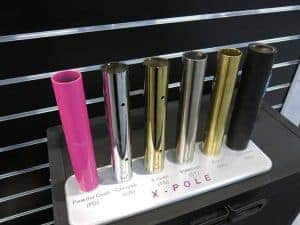
Pole Widths
40mm: Often described as the “skinny pole”. The advantage of a smaller width is that it’s easier to grip with your hands so certain moves such as beginner spins, coils, phoenix and handsprings may feel easier than on a thicker pole, and a thinner pole is less fatiguing for your forearms. A disadvantage is that it may be harder to get a deep leg hook, harder to hold moves with other grip points (such as stomach or armpit grips), and you may need to really squeeze your thighs to get a good thigh grip. It can also be more painful to do some high level dynamic tricks such as Fonji because there’s not as much surface area to absorb impact. The 40mm also does not develop hand and forearm strength quite as much as thicker poles do, though if you have very small hands it can be safer to opt for a thinner pole.
45mm: This is the Goldilocks pole for most people (“ahh, just right”), so you’ll find that many studios and competitions use this width. It’s a popular option that allows for a safe and comfortable hand grip, and it’s a good thickness to help develop most people’s hand and forearm strength. It’s also thick enough for other body grips points to get good traction. If your hands are a fair bit smaller than average, this width might feel a touch thick for you.
50mm: If you have been poling for more than 10 years in Queensland or Victoria, Australia, you’ll probably be familiar with the 50 mm pole. These were the standard size in clubs and studios in those states until around 2010-2012 when most studios started making the switch to 45mm. The benefit of a thicker pole is that it tends to be easier to grip in a leg hook and with body grip points, and it gives your hands a good workout, thus creating strong hands and forearms. A disadvantage is that for many polers with average-sized hands and people with grip issues this width might be too thick to grip comfortably, especially in moves that test your grip power, and it can also cause more forearm pump.
Stage or Mounted?
Stage
Pros: Fully portable and can be set up in open spaces such as warehouses and outdoors. Great for people who don’t have a suitable ceiling for the pressure-mounted poles, as stage poles do not touch your ceiling. Particularly useful for performers who want to set up a pole at an event or venue. You don’t have to worry about finding a stud in the roof to mount it under as it is free-standing.
Cons: It is quite bulky so takes up a lot of space which might not be ideal for smaller areas such as a living room or bedroom. The podium-style stage limits your freedom to do floorwork around the base of the pole and any dance that has your feet sweeping far out from the pole along the floor, especially if you are in heels.
Mounted
Pros: Doesn’t take up much space and can be taken down and transported easily if needed. Can be mounted on any type of flooring including carpet, tiles or hardwood. No drilling or invasive procedures necessary for installation as it uses pressure to secure between the floor and the ceiling.
Cons: Can cause damage to the ceiling if not correctly installed under a stud. Some types of ceilings (like floating ceilings) that do not have studs behind them are not suitable for a mounted pole. Can fall if it’s not mounted properly and checked regularly as per manufacturer instructions.
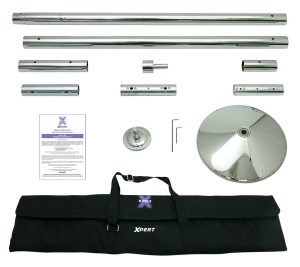
Safe Installation
It is extremely important to set up your pole correctly and to follow the enclosed instructions. Something to be aware of if you are installing a mounted pole is that you’ll need to find a stud in the roof to mount under otherwise it’s likely you’ll crack or put a hole in the ceiling which is not only damaging to your property but also quite dangerous. You can get a stud finder from most hardware shops, or if you have any friends who are tradies, they might be able to help you. You can also find the studs by going into your ceiling cavity via a manhole, but this is not possible in every property. Knocking on the ceiling is unreliable as you don’t necessarily know what you are listening to. Another thing to be wary of is that poles can come loose with prolonged use so it’s important to check it regularly to make sure it’s secure.
The Pole Away System
While this system is most commonly used in studios, it’s worth mentioning that it is an option for home use and may suit some people really well. Pole Away is a system used by X-Pole that allows you to store your pole up on the ceiling using two mounts. These mounts are bolted into the studs above the ceiling, and the bottom of the pole is wound up and down to create pressure into the floor to stabilise the pole when it’s in use. When it’s not in use, the pole lifts up hooks into its end mount and lays flush across the ceiling. This is a great option if you only want the pole on display when you’re actually using it and you want it out of the way the rest of the time, or if you want the option of extra floor space to practice other styles of dance.
Things to consider before you buy a pole
Your ceiling height: Make sure you measure how high your ceiling is before purchasing a pole so you know if you need to purchase any extra extensions or mounts. If your ceiling is higher than 2745mm you will need to buy an extra extension. If your ceiling is higher than 3370mm you will need to use a fixed ceiling mount for safety reasons.
Your ceiling type: The top dome needs to sit flush against a flat surface, so textured popcorn ceilings are generally not suitable for mounting on. If your ceiling is slanted, you will need to get a ball mount. If you have a floating ceiling, you will need a stage pole.
Cleaning your pole
Brass*, stainless and chrome: Wipe the pole down after each use with methylated spirits or acetone. Do not use water or general household cleaners on your pole.
*Brass poles will tarnish over time. This is a natural occurrence caused by a chemical reaction to oxygen, the natural oils in your skin and other elements in the air. This can make your pole grippier, but if you prefer a non-tarnished pole the best way to clean it off is with a product called “Mr Buff” which you can get from your local hardware store.
Powder coated: The best way to clean your powder coated pole is with a wet sponge or damp cloth. If you want a deeper clean you may use a very mild detergent and then rinse with plain water. Never use acetone on your powder coated pole as it will damage the coating.
Silicone: It’s important to only use a silicone pole cleaner or silicone adult toy cleaner on your silicone pole. Any sort of household cleaner, acetone or methylated spirit will damage the coating.
So there you have it, a comprehensive guide to buying a pole for your home. There is plenty more information on the X-Pole Australia website, so if you’re still unsure which pole is right for you, head over there and check out all the options!


